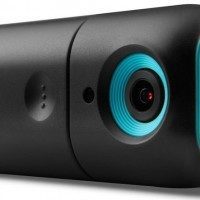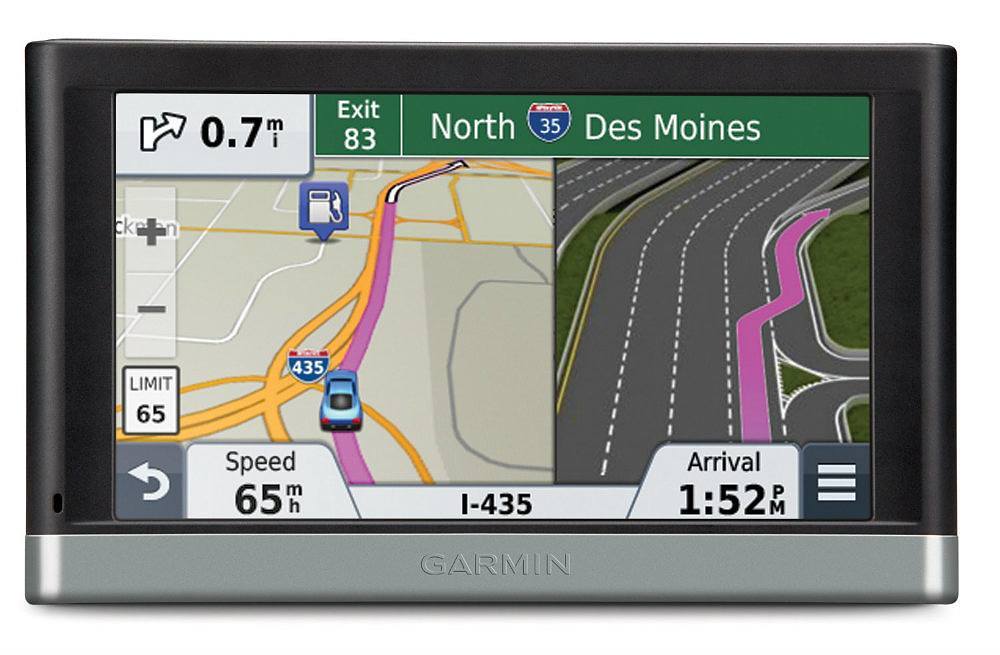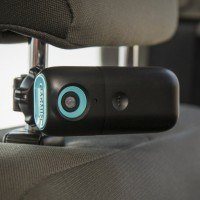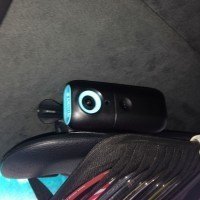“Don’t make me stop this car!”
Oh how many times my father made that threat to us in the car on some lengthy summer road trip, usually as me and one of my brothers (or all three of us) were fighting in the back seat over space, toys, or because one of us touched the other one.
Of course, Dad’s threat was often followed by his readjusting the rearview mirror or twisting around in the seat to try and see what petty insult had disturbed the peace.
Too bad he didn’t have the new Garmin babyCam Bundle. He could have gotten a live video feed of the back seat and identified the guilty culprit, which was rarely ever me, by the way.
Alas, we didn’t have GPS or miniature cameras 30+ years ago, but with the Garmin babyCam Bundle, you can finally solve that age-old problem of more easily seeing the kids kicking and fighting in the back seat. And for those of us who have ever endured a crying infant we can’t see because they are ensconced in a rear-facing car seat, the babyCam could also be a godsend.
Initial Thoughts
The Garmin babyCam Bundle combines the new Garmin Drive 50LM GPS head unit with the wireless Garmin babyCam in-vehicle video camera. The wireless camera provides an on demand view of your child right on the Drive 50’s navigation display. It works in both day and low-light conditions. The Drive 50 even beeps and flashes reminders to check for backseat passengers when the device powers off.
In day-to-day usage, the Garmin Drive 50LM is a very nice GPS. It is sleek and thin, with a large 5 inch display that leaves plenty of room on screen for content. Unfortunately, it’s almost too big – without careful placement, it can seriously block your view out the front windshield, particularly in smaller cars.
I needed a little practice at home before I got behind the wheel with the Drive 50LM for the first time. The multiplicity of menus and options makes using it straight out of the box a challenge, but once I mastered the basics, I found the Drive 50’s operation simple and relatively intuitive.



Display Characteristics
Functions are app and menu driven, and the touchscreen sensitivity was light and responsive, much like a smartphone. Inputting destination locations was simple, and the Drive 50 even offers up city-state options nearest to you when you type in a street address, meaning you don’t have to tediously select for the city and state first. One nifty feature of the Drive 50LM is onscreen alerts warning you of a nearby school, tight curve, or violation of the speed limit.
Sadly, Garmin has yet to up its game to the level of ease and sophistication we’ve come to expect from the most likely competitor: the smart phone in our pocket. The screen resolution is also not that high and the graphics, essentially the same as on my much older Garmin, now feel a bit low-tech. Alas, there’s also no pinch-to-zoom capability in the maps, so I constantly found myself attempting to zoom out with a pinch and instead just pushed the map around. You can find and navigate to a location simply by touching the map display, however, which is useful if you don’t have an exact address.
Functionality & Interactions
The system offers the usual turn-by-turn directions that include references to local landmarks, which is clever and useful in urban areas. The default voice for directions is annoying, to put it mildly. The persona is called “Samantha,” but Samantha seems to have been patterned after a keyed-up schoolmarm short on nicotine. I kept expecting someone to whack me on the knuckles with a ruler should I miss a prescribed turn.
Definitely switch to the much more pleasant “Michelle” persona.
I found the routes suggested by the Drive 50LM to be quirky around town. The device has the worrisome tendency to insist on the absolute shortest route, even if it is not the most logical one. It constantly wanted to send me down random roads to get to the preferred path, even if they were tight, bumpy side streets with kids playing banjos on the front porch. This became so bad en route to a luncheon meeting I finally turned the device off and whipped out my phone for a second opinion.
Camera Capability
Unfortunately, the wireless video camera, which is the real raison d’etre of this set up, is a major letdown. It’s clunky – about the size of half a pack of cigarettes, and needs two AA batteries. Perhaps this is for battery longevity, as the camera is essentially always on and broadcasting to the head unit. In an era of tiny cameras in our smartphones, the Garmin device felt a bit dated and something I’d expect in 2006, not 2016.
Worse still, the mechanism used to lock the camera in place is bulky and designed only to clamp to the thin metal posts that support headrests on most, if not all cars. If your car has single piece seats without headrest support posts (as is the case with both of my daily drivers), the camera becomes almost useless. I managed to jerry-rig the camera by shoving it under a visor but this is clearly not an ideal solution.


Mounting
For a package that is listed for $349.00, the crappy mount is so awful I’d have returned the whole bundle out of sheer disgust had I purchased it myself. Garmin offers additional types of mounts on their website (which all cost extra of course), but none seem to offer the versatility and simplicity I would have liked. With the plethora of high tech cameras now in tiny packages, there really is little excuse for the bulk of this camera or the unwieldy and vexing mount.
Come on Garmin – you can do better than this, right?
Getting the camera image is also a bit frustrating. While the camera may always be on (sipping those huge batteries), the image is not. You have to push a small onscreen icon to get the image on the navigation display, which remains on for only a few seconds – not always enough time to know what junior is doing in the back. I quickly found myself wishing there was a small toggle mounted somewhere on the power cable so I didn’t have to take my eyes off the road each time I wanted to view the camera image.
Conclusion
Overall, I appreciated the Garmin Drive 50LM as a GPS, and the entire package worked reasonably well, aside from the frustrating camera mount. But after a month with it, I am not sure the babyCam itself is really worthwhile from a value standpoint. A simple $15 headrest mirror pointed at a child in a rear facing seat is a simpler and definitely cheaper alternative to the clunky camera. Once the kiddies are out of the rear-facing seats, I can settle for looking in my rearview mirror just as dad did.
My recommendation? Buy the Drive 50LM separately and leave off the babyCam. As of this writing, the Drive 50LM retails for $149.99 while the babyCam Bundle goes for $349.00. The money you save can be used instead to invest in a good pair of ear plugs to block out the sound of the kids fighting in back.
*Jonathan Orr is a writer, car aficionado, PR pro, Navy Public Affairs Ofiicer, Afghanistan veteran, and proud father. He considers his beloved Porsche 911 a member of the family. Follow him on Twitter: @jonathanjorr
from Automoblog.net http://www.automoblog.net/2016/03/08/garmin-babycam-bundle-review/
via IFTTT
from Tumblr http://peternpalmer.tumblr.com/post/140729384966
via IFTTT
No comments:
Post a Comment